1 Basic concepts: atoms
1.1 Introduction
Inorganic chemistry: it is not an isolated branch of chemistry
The aims of Chapters 1 and 2
1.2 Fundamental particles of an atom
1.3 Atomic number, mass number and isotopes
Nuclides, atomic number and mass number
Relative atomic mass
Isotopes
1.4 Successes in early quantum theory
Some important successes of classical quantum theory
Bohr’s theory of the atomic spectrum of hydrogen
1.5 An introduction to wave mechanics
The wave-nature of electrons
The uncertainty principle
The Schrodinger wave equation
1.6 Atomic orbitals
The quantum numbers n , l and ml
The radial part of the wavefunction, R (r )
The radial distribution function, 4�r2R(r)2
The angular part of the wavefunction, A.�; �.
Orbital energies in a hydrogen-like species
Size of orbitals
The spin quantum number and the magnetic spin quantum number
The ground state of the hydrogen atom
1.7 Many-electron atoms
The helium atom: two electrons
Ground state electronic configurations: experimental data
Penetration and shielding
1.8 The periodic table
1.9 The aufbau principle
Ground state electronic configurations
Valence and core electrons
Diagrammatic representations of electronic configurations
1.10 Ionization energies and electron affinities
Ionization energies
Electron affinities
2 Basic concepts: molecules
2.1 Bonding models: an introduction
A historical overview
Lewis structures
2.2 Homonuclear diatomic molecules: valence bond (VB) theory
Uses of the term homonuclear
Covalent bond distance, covalent radius and van der Waals radius
The valence bond (VB) model of bonding in H2
The valence bond (VB) model applied to F2 , O2 and N2
2.3 Homonuclear diatomic molecules: molecular orbital (MO) theory
An overview of the MO model
Molecular orbital theory applied to the bonding in H2
The bonding in He2; Li2 and Be2
The bonding in F2 and O2
What happens if the s–p separation is small?
2.4 The octet rule and isoelectronic species
The octet rule: first row p-block elements
Isoelectronic species
The octet rule: heavier p-block elements
2.5 Electronegativity values
Pauling electronegativity values, �P
Mulliken electronegativity values, �M
Allred–Rochow electronegativity values, �AR
Electronegativity: final remarks
2.6 Dipole moments
Polar diatomic molecules
Molecular dipole moments
2.7 MO theory: heteronuclear diatomic molecules
Which orbital interactions should be considered?
Hydrogen fluoride
Carbon monoxide
2.8 Molecular shape and the VSEPR model
Valence-shell electron-pair repulsion model
Structures derived from a trigonal bipyramid
Limitations of the VSEPR model
2.9 Molecular shape: stereoisomerism
Square planar species
Octahedral species
Trigonal bipyramidal species
High coordination numbers
Double bonds
3 Introduction to molecular symmetry
3.1 Introduction
3.2 Symmetry operations and symmetry elements
Rotation about an n-fold axis of symmetry
Reflection through a plane of symmetry (mirror plane)
Reflection through a centre of symmetry (inversion centre)
Rotation about an axis, followed by reflection through a plane perpendicular to this axis
Identity operator
3.3 Successive operations
3.4 Point groups
C1 point group
C1v point group
D1h point group
Td, Oh or Ih point groups
Determining the point group of a molecule or molecular ion
3.5 Character tables: an introduction
3.6 Why do we need to recognize symmetry elements?
3.7 Vibrational spectroscopy
How many vibrational modes are there for a given molecular species?
Selection rules for an infrared or Raman active mode of vibration
Linear (D1h or C1v ) and bent (C2v ) triatomic molecules
Bent molecules XY2 : using the C2v character table
XY3 molecules with D3h symmetry
XY3 molecules with C3v symmetry
XY4 molecules with Td or D4h symmetry
XY6 molecules with Oh symmetry
Metal carbonyl complexes, M(CO)n
Metal carbonyl complexes M(CO)6�n Xn
Observing IR spectroscopic absorptions
3.8 Chiral molecules
4 Experimental techniques
4.1 Introduction
4.2 Separation and purification techniques
Gas chromatography (GC)
Liquid chromatography (LC)
High-performance liquid chromatography (HPLC)
Recrystallization
4.3 Elemental analysis
CHN analysis by combustion
Atomic absorption spectroscopy (AAS)
4.4 Compositional analysis: thermogravimetry (TG)
4.5 Mass spectrometry
Electron ionization (EI)
Fast atom bombardment (FAB)
Matrix-assisted laser desorption ionization time-of-flight (MALDI-TOF)
Electrospray ionization (ESI)
4.6 Infrared and Raman spectroscopies
Energies and wavenumbers of molecular vibrations
The Fourier transform infrared (FT-IR) spectrometer and sample preparation
Diagnostic absorptions
Deuterium/hydrogen exchange
Raman spectroscopy
4.7 Electronic spectroscopy
UV-VIS absorption spectroscopy
Types of absorption
Absorbance and the Beer–Lambert Law
Emission spectroscopy
4.8 Nuclear magnetic resonance (NMR) spectroscopy
NMR active nuclei and isotope abundance
Which nuclei are suitable for NMR spectroscopic studies?
Resonance frequencies and chemical shifts
Chemical shift ranges
Solvents for solution studies
Integration of signals and signal broadening
Homonuclear spin–spin coupling: 1 H–1 H
Heteronuclear spin–spin coupling: 13 C–1 H
Case studies
Stereochemically non-rigid species
Exchange processes in solution
4.9 Electron paramagnetic resonance (EPR) spectroscopy
What is EPR spectroscopy?
The Zeeman electronic effect
EPR spectra
4.10 Mo¨ssbauer spectroscopy
The technique of MoÅN ssbauer spectroscopy
What can isomer shift data tell us?
4.11 Structure determination: diffraction methods
X-ray diffraction (XRD)
Single crystal X-ray diffraction
Powder X-ray diffraction
Single crystal neutron diffraction
Electron diffraction
Low-energy electron diffraction (LEED)
Structural databases
4.12 Photoelectron spectroscopy (PES, UPS, XPS, ESCA)
4.13 Computational methods
Hartree–Fock theory
Density functional theory
Hu¨ckel MO theory
Molecular mechanics (MM)
5 Bonding in polyatomic molecules
5.1 Introduction
5.2 Valence bond theory: hybridization of atomic orbitals
What is orbital hybridization?
sp Hybridization: a scheme for linear species
sp2 Hybridization: a scheme for trigonal planar species
sp3 Hybridization: a scheme for tetrahedral and related species
Other hybridization schemes
5.3 Valence bond theory: multiple bonding in polyatomic molecules
C2 H4
HCN
BF3
5.4 Natural bond orbitals
5.5 Molecular orbital theory: the ligand group orbital approach and
Molecular orbital diagrams: moving from a diatomic to polyatomic species
MO approach to bonding in linear XH2 : symmetry matching by inspection
MO approach to bonding in linear XH2 : working from molecular symmetry
A bent triatomic: H2 O
5.6 Molecular orbital theory applied to the polyatomic molecules BH3 , NH3 and CH4
A comparison of the MO and VB bonding models
5.7 Molecular orbital theory: bonding analyses soon become complicated
5.8 Molecular orbital theory: learning to use the theory objectively -Bonding in CO2
p-Bonding in CO2
Three-centre two-electron interactions
A more advanced problem: B2 H6
6 Structures and energetics of metallic and ionic solids
6.1 Introduction
6.2 Packing of spheres
Cubic and hexagonal close-packing
The unit cell: hexagonal and cubic close-packing
Interstitial holes: hexagonal and cubic close-packing
Non-close-packing: simple cubic and body-centred cubic arrays
6.3 The packing-of-spheres model applied to the structures of elements
Group 18 elements in the solid state
H2 and F2 in the solid state
Metallic elements in the solid state
6.4 Polymorphism in metals
Polymorphism: phase changes in the solid state
Phase diagrams
6.5 Metallic radii
6.6 Melting points and standard enthalpies of atomization of metals
6.7 Alloys and intermetallic compounds
Substitutional alloys
Interstitial alloys
Intermetallic compounds
6.8 Bonding in metals and semiconductors
Electrical conductivity and resistivity
Band theory of metals and insulators
The Fermi level
6.9 Semiconductors
Intrinsic semiconductors
Extrinsic (n- and p-type) semiconductors
6.10 Sizes of ions
Ionic radii
Periodic trends in ionic radii
6.11 Ionic lattices
The rock salt (NaCl) structure type
The caesium chloride (CsCl) structure type
The fluorite (CaF2) structure type
The antifluorite structure type
The zinc blende (ZnS) structure type: a diamond-type network
The b -cristobalite (SiO2) structure type
The wurtzite (ZnS) structure type
The rutile (TiO2) structure type
CdI2 and CdCl2 : layer structures
The perovskite (CaTiO3) structure type: a double oxide
6.12 Crystal structures of semiconductors
6.13 Lattice energy: estimates from an electrostatic model
Coulombic attraction within an isolated ion-pair
Coulombic interactions in an ionic lattice
Born forces
The Born–LandeÅL equation
Madelung constants
Refinements to the Born–LandeÅL equation
Overview
6.14 Lattice energy: the Born–Haber cycle
6.15 Lattice energy: ‘calculated’ versus ‘experimental’ values
6.16 Estimating lattice energies of new materials
The Kapustinskii equation
The volume-based thermodynamic (VBT) approach
6.17 Applications of lattice energies
Estimation of electron affinities
Fluoride affinities
Estimation of standard enthalpies of formation and disproportionation
6.18 Defects in solid state lattices
Schottky defect
Frenkel defect
Experimental observation of Schottky and Frenkel defects
Non-stoichiometric compounds
Colour centres (F-centres)
Thermodynamic effects of crystal defects
7 Acids, bases and ions in aqueous solution
7.1 Introduction
7.2 Properties of water
Structure and hydrogen bonding
The self-ionization of water
Water as a Bronsted acid or base
7.3 Definitions and units in aqueous solution
Molarity and molality
Standard state
Activity
7.4 Some Brønsted acids and bases
Carboxylic acids: examples of mono-, di- and polybasic acids
Inorganic acids
Inorganic bases: hydroxides
Inorganic bases: nitrogen bases
7.5 The energetics of acid dissociation in aqueous solution
Hydrogen halides
H2 S; H2 Se and H2 Te
7.6 Trends within a series of oxoacids EOn (OH)m
7.7 Aquated cations: formation and acidic properties
Water as a Lewis base
Aquated cations as Bronsted acids
7.8 Amphoteric oxides and hydroxides
Amphoteric behaviour
Periodic trends in amphoteric properties
7.9 Solubilities of ionic salts
Solubility and saturated solutions
Sparingly soluble salts and solubility products
The energetics of the dissolution of an ionic salt: �solG
The energetics of the dissolution of an ionic salt: hydration of ions
Solubilities: some concluding remarks
7.10 Common-ion effect
7.11 Coordination complexes: an introduction
Definitions and terminology
Investigating coordination complex formation
7.12 Stability constants of coordination complexes
Determination of stability constants
Trends in stepwise stability constants
Thermodynamic considerations of complex formation: an introduction
7.13 Factors affecting the stabilities of complexes containing only monodentate ligands
Ionic size and charge
Hard and soft metal centres and ligands
8 Reduction and oxidation
8.1 Introduction
Oxidation and reduction
Oxidation states
Stock nomenclature
8.2 Standard reduction potentials, Eo , and relationships between Eo ,�Go and K
Half-cells and galvanic cells
Defining and using standard reduction potentials, E
Dependence of reduction potentials on cell conditions
8.3 The effect of complex formation or precipitation on Mz+/M reduction potentials
Half-cells involving silver halides
Modifying the relative stabilities of different oxidation states of a metal
8.4 Disproportionation reactions
Disproportionation
Stabilizing species against disproportionation
8.5 Potential diagrams
8.6 Frost–Ebsworth diagrams
Frost–Ebsworth diagrams and their relationship to potential diagrams
Interpretation of Frost–Ebsworth diagrams
8.7 The relationships between standard reduction potentials and some other quantities
Factors influencing the magnitudes of standard reduction potentials
Values of �fG for aqueous ions
8.8 Applications of redox reactions to the extraction of elements from their ores
Ellingham diagrams
9 Non-aqueous media
9.1 Introduction
9.2 Relative permittivity
9.3 Energetics of ionic salt transfer from water to an organic solvent
9.4 Acid–base behaviour in non-aqueous solvents
Strengths of acids and bases
Levelling and differentiating effects
‘Acids’ in acidic solvents
Acids and bases: a solvent-oriented definition
Proton-containing and aprotic solvents
9.5 Liquid sulfur dioxide
9.6 Liquid ammonia
Physical properties
Self-ionization
Reactions in liquid NH3
Solutions of s-block metals in liquid NH3
Redox reactions in liquid NH3
9.7 Liquid hydrogen fluoride
Physical properties
Acid–base behaviour in liquid HF
Electrolysis in liquid HF
9.8 Sulfuric acid and fluorosulfonic acid
Physical properties of sulfuric acid
Acid–base behaviour in liquid H2 SO4
Physical properties of fluorosulfonic acid
9.9 Superacids
9.10 Bromine trifluoride
Physical properties
Behaviour of fluoride salts and molecular fluorides in BrF3
Reactions in BrF3
9.11 Dinitrogen tetraoxide
Physical properties
Reactions in N2 O4
9.12 Ionic liquids
Molten salt solvent systems
Ionic liquids at ambient temperatures
9.13 Supercritical fluids
Properties of supercritical fluids and their uses as solvents
Supercritical fluids as media for inorganic chemistry
10 Hydrogen
10.1 Hydrogen: the simplest atom
10.2 The H. and H� ions
The hydrogen ion (proton)
The hydride ion
10.3 Isotopes of hydrogen
Protium and deuterium
Kinetic isotope effects
Deuterated compounds
Tritium
10.4 Dihydrogen
Occurrence
Physical properties
Synthesis and uses
Reactivity
10.5 Polar and non-polar E–H bonds
10.6 Hydrogen bonding
The hydrogen bond
Trends in boiling points, melting points and enthalpies of vaporization for p -block binary hydrides
Infrared spectroscopy
Solid state structures
Hydrogen bonding in biological systems
10.7 Binary hydrides: classification and general properties
Classification
Metallic hydrides
Saline hydrides
Molecular hydrides and complexes derived from them
Covalent hydrides with extended structures
11 Group 1: the alkali metals
11.1 Introduction
11.2 Occurrence, extraction and uses
Occurrence
Extraction
Major uses of the alkali metals and their compounds
11.3 Physical properties
General properties
Atomic spectra and flame tests
Radioactive isotopes
NMR active nuclei
11.4 The metals
Appearance
Reactivity
11.5 Halides
11.6 Oxides and hydroxides
Oxides, peroxides, superoxides, suboxides and ozonides
Hydroxides
11.7 Salts of oxoacids: carbonates and hydrogencarbonates
11.8 Aqueous solution chemistry and macrocyclic complexes
Hydrated ions
Complex ions
11.9 Non-aqueous coordination chemistry
12 The group 2 metals
12.1 Introduction
12.2 Occurrence, extraction and uses
Occurrence
Extraction
Major uses of the group 2 metals and their compounds
12.3 Physical properties
General properties
Flame tests
Radioactive isotopes
12.4 The metals
Appearance
Reactivity
12.5 Halides
Beryllium halides
Halides of Mg, Ca, Sr and Ba
12.6 Oxides and hydroxides
Oxides and peroxides
Hydroxides
12.7 Salts of oxoacids
12.8 Complex ions in aqueous solution
Aqua species of beryllium
Aqua species of Mg2+, Ca2+, Sr2+ and Ba2+
Complexes with ligands other than water
12.9 Complexes with amido or alkoxy ligands
12.10 Diagonal relationships between Li and Mg, and between Be and Al
Lithium and magnesium
Beryllium and aluminium
13 The group 13 elements
13.1 Introduction
13.2 Occurrence, extraction and uses
Occurrence
Extraction
Major uses of the group 13 elements and their compounds
13.3 Physical properties
Electronic configurations and oxidation states
NMR active nuclei
13.4 The elements
Appearance
Structures of the elements
Reactivity
13.5 Simple hydrides
Neutral hydrides
The [MH4]- ions
13.6 Halides and complex halides
Boron halides: BX3 and B2 X4
Al(III), Ga(III), In(III) and Tl(III) halides and their complexes
Lower oxidation state Al, Ga, In and Tl halides
13.7 Oxides, oxoacids, oxoanions and hydroxides
Boron oxides, oxoacids and oxoanions
Aluminium oxides, oxoacids, oxoanions and hydroxides
Oxides of Ga, In and Tl
13.8 Compounds containing nitrogen
Nitrides
Ternary boron nitrides
Molecular species containing B–N or B–P bonds
Molecular species containing group 13 metal–nitrogen bonds
13.9 Aluminium to thallium: salts of oxoacids, aqueous solution chemistry and complexes
Aluminium sulfate and alums
Aqua ions
Redox reactions in aqueous solution
Coordination complexes of the M3+ ions
13.10 Metal borides
13.11 Electron-deficient borane and carbaborane clusters: an introduction
14 The group 14 elements
14.1 Introduction
14.2 Occurrence, extraction and uses
Occurrence
Extraction and manufacture
Uses
14.3 Physical properties
Ionization energies and cation formation
Some energetic and bonding considerations
NMR active nuclei
Mossbauer spectroscopy
14.4 Allotropes of carbon
Graphite and diamond: structure and properties
Graphite: intercalation compounds
Fullerenes: synthesis and structure
Fullerenes: reactivity
Carbon nanotubes
14.5 Structural and chemical properties of silicon, germanium, tin and lead
Structures
Chemical properties
14.6 Hydrides
Binary hydrides
Halohydrides of silicon and germanium
14.7 Carbides, silicides, germides, stannides and plumbides
Carbides
Silicides
Zintl ions containing Si, Ge, Sn and Pb
14.8 Halides and complex halides
Carbon halides
Silicon halides
Halides of germanium, tin and lead
14.9 Oxides, oxoacids and hydroxides
Oxides and oxoacids of carbon
Silica, silicates and aluminosilicates
Oxides, hydroxides and oxoacids of germanium, tin and lead
14.10 Siloxanes and polysiloxanes (silicones)
14.11 Sulfides
14.12 Cyanogen, silicon nitride and tin nitride
Cyanogen and its derivatives
Silicon nitride
Tin(IV) nitride
14.13 Aqueous solution chemistry and salts of oxoacids of germanium, tin and lead
15 The group 15 elements
15.1 Introduction
15.2 Occurrence, extraction and uses
Occurrence
Extraction
Uses
15.3 Physical properties
Bonding considerations
NMR active nuclei
Radioactive isotopes
15.4 The elements
Nitrogen
Phosphorus
Arsenic, antimony and bismuth
15.5 Hydrides
Trihydrides, EH3 (E. N, P, As, Sb and Bi)
Hydrides E2 H4 (E. N, P, As)
Chloramine and hydroxylamine
Hydrogen azide and azide salts
15.6 Nitrides, phosphides, arsenides, antimonides and bismuthides
Nitrides
Phosphides
Arsenides, antimonides and bismuthides
15.7 Halides, oxohalides and complex halides
Nitrogen halides
Oxofluorides and oxochlorides of nitrogen
Phosphorus halides
Phosphoryl trichloride, POCl3
Arsenic and antimony halides
Bismuth halides
15.8 Oxides of nitrogen
Dinitrogen monoxide, N2O
Nitrogen monoxide, NO
Dinitrogen trioxide, N2O3
Dinitrogen tetraoxide, N2 O4 , and nitrogen dioxide, NO2
Dinitrogen pentaoxide, N2O5
15.9 Oxoacids of nitrogen
Isomers of H2 N2 O2
Nitrous acid, HNO2
Nitric acid, HNO3 , and its derivatives
15.10 Oxides of phosphorus, arsenic, antimony and bismuth
Oxides of phosphorus
Oxides of arsenic, antimony and bismuth
15.11 Oxoacids of phosphorus
Phosphinic acid, H3 PO2
Phosphonic acid, H3 PO3
Hypodiphosphoric acid, H4 P2 O6
Phosphoric acid, H3 PO4 , and its derivatives
Chiral phosphate anions
15.12 Oxoacids of arsenic, antimony and bismuth
15.13 Phosphazenes
15.14 Sulfides and selenides
Sulfides and selenides of phosphorus
Arsenic, antimony and bismuth sulfides
15.15 Aqueous solution chemistry and complexes
16 The group 16 elements
16.1 Introduction
16.2 Occurrence, extraction and uses
Occurrence
Extraction
Uses
16.3 Physical properties and bonding considerations
NMR active nuclei and isotopes as tracers
16.4 The elements
Dioxygen
Ozone
Sulfur: allotropes
Sulfur: reactivity
Selenium and tellurium
16.5 Hydrides
Water, H2O
Hydrogen peroxide, H2O2
Hydrides H2E (E = S, Se, Te)
Polysulfanes
16.6 Metal sulfides, polysulfides, polyselenides and polytellurides
Sulfides
Polysulfides
Polyselenides and polytellurides
16.7 Halides, oxohalides and complex halides
Oxygen fluorides
Sulfur fluorides and oxofluorides
Sulfur chlorides and oxochlorides
Halides of selenium and tellurium
16.8 Oxides
Oxides of sulfur
Oxides of selenium and tellurium
16.9 Oxoacids and their salts
Dithionous acid, H2S2O4
Sulfurous and disulfurous acids, H2SO3 and H2S2O5
Dithionic acid, H2S2O6
Sulfuric acid, H2SO4
Fluoro- and chlorosulfonic acids, HSO3F and HSO3 Cl
Polyoxoacids with S–O–S units
Peroxysulfuric acids, H2S2O8 and H2SO5
Thiosulfuric acid, H2S2O3, and polythionates
Oxoacids of selenium and tellurium
16.10 Compounds of sulfur and selenium with nitrogen
Sulfur–nitrogen compounds
Tetraselenium tetranitride
16.11 Aqueous solution chemistry of sulfur, selenium and tellurium
17 The group 17 elements
17.1 Introduction
Fluorine, chlorine, bromine and iodine
Astatine and tennessine
17.2 Occurrence, extraction and uses
Occurrence
Extraction
Uses
17.3 Physical properties and bonding considerations
NMR active nuclei and isotopes as tracers
17.4 The elements
Difluorine
Dichlorine, dibromine and diiodine
Charge transfer complexes
Clathrates
17.5 Hydrogen halides
17.6 Metal halides: structures and energetics
17.7 Interhalogen compounds and polyhalogen ions
Interhalogen compounds
Bonding in . [XY2]- ions
Polyhalogen cations
Polyhalide anions
17.8 Oxides and oxofluorides of chlorine, bromine and iodine
Oxides
Oxofluorides
17.9 Oxoacids and their salts
Hypofluorous acid, HOF
Oxoacids of chlorine, bromine and iodine
17.10 Aqueous solution chemist
18 The group 18 elements
18.1 Introduction
18.2 Occurrence, extraction and uses
Occurrence
Extraction
Uses
18.3 Physical properties
NMR active nuclei
18.4 Compounds of xenon
Fluorides
Chlorides
Oxides
Oxofluorides and oxochlorides
Other compounds of xenon
18.5 Compounds of argon, krypton and radon
19 d-Block metal chemistry: general considerations
19.1 Topic overview
19.2 Ground state electronic configurations
d-Block metals versus transition elements
Electronic configurations
19.3 Physical properties
19.4 The reactivity of the metals
19.5 Characteristic properties: a general perspective
Colour
Paramagnetism
Complex formation
Variable oxidation states
19.6 Electroneutrality principle
19.7 Coordination numbers and geometries
The Kepert model
Coordination numbers in the solid state
Coordination number 2
Coordination number 3
Coordination number 4
Coordination number 5
Coordination number 6
Coordination number 7
Coordination number 8
Coordination number 9
Coordination numbers of 10 and above
19.8 Isomerism in d -block metal complexes
Structural isomerism: ionization isomers
Structural isomerism: hydration isomers
Structural isomerism: coordination isomerism
Structural isomerism: linkage isomerism
Stereoisomerism: diastereoisomers
Stereoisomerism: enantiomers
20 d-Block metal chemistry: coordination complexes
20.1 Introduction
High- and low-spin states
20.2 Bonding in d -block metal complexes: valence bond theory
Hybridization schemes
20.3 Crystal field theory
The octahedral crystal field
Crystal field stabilization energy: high- and low-spin octahedral complexes
Jahn–Teller distortions
The tetrahedral crystal field
The square planar crystal field
Other crystal fields
Crystal field theory: uses and limitations
20.4 Molecular orbital theory: octahedral complexes
Complexes with no metal–ligand � -bonding
Complexes with metal–ligand � -bonding
20.5 Ligand field theory
20.6 Describing electrons in multi-electron systems
Quantum numbers L and ML for multi-electron species
Quantum numbers S and MS for multi-electron species
Microstates and term symbols
The quantum numbers J and MJ
Ground states of elements with Z=1-�10
The d2 configuration
20.7 Electronic spectra: absorption
Spectral features
Charge transfer absorptions
Selection rules
Electronic absorption spectra of octahedral and tetrahedral complexes
Interpretation of electronic absorption spectra: use of Racah parameters
Interpretation of electronic absorption spectra: Tanabe–Sugano diagrams
20.8 Electronic spectra: emission
20.9 Evidence for metal–ligand covalent bonding
The nephelauxetic effect
EPR spectroscopy
20.10 Magnetic properties
Magnetic susceptibility and the spin-only formula
Spin and orbital contributions to the magnetic moment
The effects of temperature on �eff
Spin crossover
Ferromagnetism, antiferromagnetism and ferrimagnetism
20.11 Thermodynamic aspects: ligand field stabilization energies (LFSE)
Trends in LFSE
Lattice energies and hydration energies of Mn+ ions
Octahedral versus tetrahedral coordination: spinels
20.12 Thermodynamic aspects: the Irving–Williams series
20.13 Thermodynamic aspects: oxidation states in aqueous solution
21 d-Block metal chemistry: the first row metals
21.1 Introduction
21.2 Occurrence, extraction and uses
21.3 Physical properties: an overview
21.4 Group 3: scandium
The metal
Scandium(III)
21.5 Group 4: titanium
The metal
Titanium(IV)
Titanium(III)
Low oxidation states
21.6 Group 5: vanadium
The metal
Vanadium(V)
Vanadium(IV)
Vanadium(III)
Vanadium(II)
21.7 Group 6: chromium
The metal
Chromium(VI)
Chromium(V) and chromium(IV)
Chromium(III)
Chromium(II)
Chromium–chromium multiple bonds
21.8 Group 7: manganese
The metal
Manganese(VII)
Manganese(VI)
Manganese(V)
Manganese(IV)
Manganese(III)
Manganese(II)
Manganese(I)
21.9 Group 8: iron
The metal
Iron(VI), iron(V) and iron(IV)
Iron(III)
Iron(II)
Iron in low oxidation states
21.10 Group 9: cobalt
The metal
Cobalt(IV)
Cobalt(III)
Cobalt(II)
21.11 Group 10: nickel
The metal
Nickel(IV) and nickel(III
Nickel(II)
Nickel(I)
21.12 Group 11: copper
The metal
Copper(IV) and copper(III)
Copper(II)
Copper(I)
21.13 Group 12: zinc
The metal
Zinc(II)
Zinc(I)
22 d-Block metal chemistry: the heavier metals
22.1 Introduction
22.2 Occurrence, extraction and uses
22.3 Physical properties
Effects of the lanthanoid contraction
Coordination numbers
NMR active nuclei
22.4 Group 3: yttrium
The metal
Yttrium(III)
22.5 Group 4: zirconium and hafnium
The metals
Zirconium(IV) and hafnium(IV)
Lower oxidation states of zirconium and hafnium
Zirconium clusters
22.6 Group 5: niobium and tantalum
The metals
Niobium(V) and tantalum(V)
Niobium(IV) and tantalum(IV)
Lower oxidation state halides
22.7 Group 6: molybdenum and tungsten
The metals
Molybdenum(VI) and tungsten(VI)
Molybdenum(V) and tungsten(V)
Molybdenum(IV) and tungsten(IV)
Molybdenum(III) and tungsten(III)
Molybdenum(II) and tungsten(II)
22.8 Group 7: technetium and rhenium
The metals
High oxidation states of technetium and rhenium: M(VII), M(VI) and M(V)
Technetium(IV) and rhenium(IV)
Technetium(III) and rhenium(III)
Technetium(I) and rhenium(I)
22.9 Group 8: ruthenium and osmium
The metals
High oxidation states of ruthenium and osmium: M(VIII), M(VII) and M(VI)
Ruthenium(V), (IV) and osmium(V), (IV)
Ruthenium(III) and osmium(III)
Ruthenium(II) and osmium(II)
Mixed-valence ruthenium complexes
22.10 Group 9: rhodium and iridium
The metals
High oxidation states of rhodium and iridium: M(VI) and M(V)
Rhodium(IV) and iridium(IV)
Rhodium(III) and iridium(III)
Rhodium(II) and iridium(II)
Rhodium(I) and iridium(I)
22.11 Group 10: palladium and platinum
The metals
The highest oxidation states: M(VI) and M(V)
Palladium(IV) and platinum(IV)
Palladium(III), platinum(III) and mixed-valence complexes
Palladium(II) and platinum(II)
Platinum(–II)
22.12 Group 11: silver and gold
The metals
Gold(V) and silver(V)
Gold(III) and silver(III)
Gold(II) and silver(II)
Gold(I) and silver(I)
Gold(–I) and silver(–I)
22.13 Group 12: cadmium and mercury
The metals
Cadmium(II)
Mercury(II)
Mercury(I)
23 Organometallic compounds of s- and p-block elements
23.1 Introduction
23.2 Group 1: alkali metal organometallics
23.3 Group 2 organometallics
Beryllium
Magnesium
Calcium, strontium and barium
23.4 Group 13
Boron
Aluminium
Gallium, indium and thallium
23.5 Group 14
Silicon
Germanium
Tin
Lead
Coparallel and tilted C5 -rings in group 14 metallocenes
23.6 Group 15
Bonding aspects and E=E bond formation
Arsenic, antimony and bismuth
23.7 Group 16
Selenium and tellurium
24 Organometallic compounds of d-block elements
24.1 Introduction
24.2 Common types of ligand: bonding and spectroscopy
�-Bonded alkyl, aryl and related ligands
Carbonyl ligands
Hydride ligands
Phosphane and related ligands
�-Bonded organic ligands
Nitrogen monoxide
Dinitrogen
Dihydrogen
24.3 The 18-electron rule
24.4 Covalent bond classification (CBC)
24.5 Metal carbonyls: synthesis, physical properties and structure
Synthesis and physical properties
Structures
24.6 The isolobal principle and application of Wade’s rules
24.7 Total valence electron counts in d-block organometallic clusters
Single cage structures
Condensed cages
Limitations of total valence counting schemes
24.8 Types of organometallic reactions
Substitution of CO ligands
Oxidative addition
Alkyl and hydrogen migrations
b-Hydrogen elimination
a-Hydrogen abstraction
Summary
24.9 Metal carbonyls: selected reactions
24.10 Metal carbonyl hydrides and halides
24.11 Alkyl, aryl, alkene and alkyne complexes
�-Bonded alkyl and aryl ligands
Alkene ligands
Alkyne ligands
24.12 Allyl and buta-1,3-diene complexes
Allyl and related ligands
Buta-1,3-diene and related ligands
24.13 Carbene and carbyne complexes
24.14 Complexes containing Z5 -cyclopentadienyl ligands
Ferrocene and other metallocenes
(Z5-Cp)2Fe2(CO)4 and derivatives
24.15 Complexes containing Z6- and Z7-ligands
Z6-Arene ligands
Cycloheptatriene and derived ligands
24.16 Complexes containing the Z4-cyclobutadiene ligand
25 Catalysis and some industrial processes
25.1 Introduction and definitions
25.2 Catalysis: introductory concepts
Energy profiles for a reaction: catalysed versus non-catalysed
Catalytic cycles
Choosing a catalyst
25.3 Homogeneous catalysis: alkene (olefin) and alkyne metathesis
25.4 Homogeneous catalytic reduction of N2 to NH3
25.5 Homogeneous catalysis: industrial applications
Alkene hydrogenation
Monsanto and Cativa acetic acid syntheses
Tennessee–Eastman acetic anhydride process
Hydroformylation (Oxo-process)
Alkene oligomerization
25.6 Homogeneous catalyst development
Polymer-supported catalysts
Biphasic catalysis
25.7 Heterogeneous catalysis: surfaces and interactions with adsorbates
25.8 Heterogeneous catalysis: commercial applications
Alkene polymerization: Ziegler–Natta catalysis and metallocene catalysts
Fischer–Tropsch carbon chain growth
Haber–Bosch process
Production of SO3 in the Contact process
Catalytic converters
Zeolites as catalysts for organic transformations: uses of ZSM-5
25.9 Heterogeneous catalysis: organometallic cluster models
26 d-Block metal complexes: reaction mechanisms
26.1 Introduction
26.2 Ligand substitutions: some general points
Kinetically inert and labile complexes
Stoichiometric equations say nothing about mechanism
Types of substitution mechanism
Activation parameters
26.3 Substitution in square planar complexes
Rate equations, mechanism and the trans-effect
Ligand nucleophilicity
26.4 Substitution and racemization in octahedral complexes
Water exchange
The Eigen–Wilkins mechanism
Stereochemistry of substitution
Base-catalysed hydrolysis
Isomerization and racemization of octahedral complexes
26.5 Electron-transfer processes
Inner-sphere mechanism
Outer-sphere mechanism
27 The f-block metals: lanthanoids and actinoids
27.1 Introduction
27.2 f-Orbitals and oxidation states
27.3 Atom and ion sizes
The lanthanoid contraction
Coordination numbers
27.4 Spectroscopic and magnetic properties
Electronic spectra and magnetic moments: lanthanoids
Luminescence of lanthanoid complexes
Electronic spectra and magnetic moments: actinoids
27.5 Sources of the lanthanoids and actinoids
Occurrence and separation of the lanthanoids
The actinoids
27.6 Lanthanoid metals
27.7 Inorganic compounds and coordination complexes of the lanthanoids
Halides
Hydroxides and oxides
Complexes of Ln(III)
27.8 Organometallic complexes of the lanthanoids
�-Bonded complexes
Cyclopentadienyl complexes
Bis(arene) derivatives
Complexes containing the Z8-cyclooctatetraenyl ligand
27.9 The actinoid metals
27.10 Inorganic compounds and coordination complexes of thorium, uranium and plutonium
Thorium
Uranium
Plutonium
27.11 Organometallic complexes of thorium and uranium
-Bonded complexes
Cyclopentadienyl derivatives
Complexes containing the Z8-cyclooctatetraenyl ligand
28 Inorganic materials and nanotechnology
28.1 Introduction
28.2 Electrical conductivity in ionic solids
Sodium and lithium ion conductors
d-Block metal(II) oxides
28.3 Transparent conducting oxides and their applications in devices
Sn-doped In2O3 (ITO) and F-doped SnO2 (FTO)
Dye-sensitized solar cells (DSCs)
Solid state lighting: OLEDs
Solid state lighting: LECs
28.4 Superconductivity
Superconductors: early examples and basic theory
High-temperature superconductors
Iron-based superconductors
Chevrel phases
Superconducting properties of MgB2
Applications of superconductors
28.5 Ceramic materials: colour pigments
White pigments (opacifiers)
Adding colour
28.6 Chemical vapour deposition (CVD)
High-purity silicon for semiconductors
a-Boron nitride
Silicon nitride and carbide
III–V Semiconductors
Metal deposition
Ceramic coatings
Perovskites and cuprate superconductors
28.7 Inorganic fibres
Boron fibres
Carbon fibres
Silicon carbide fibres
Alumina fibres
28.8 Graphene
28.9 Carbon nanotubes
29 The trace metals of life
29.1 Introduction
Amino acids, peptides and proteins: some terminology
29.2 Metal storage and transport: Fe, Cu, Zn and V
Iron storage and transport
Metallothioneins: transporting some toxic metals
29.3 Dealing with O2
Haemoglobin and myoglobin
Haemocyanin
Haemerythrin
Cytochromes P-450
29.4 Biological redox processes
Blue copper proteins
The mitochondrial electron-transfer chain
Iron–sulfur proteins
Cytochromes
29.5 The Zn2+ ion: Nature’s Lewis acid
Carbonic anhydrase II
Carboxypeptidase A
Carboxypeptidase G2
Cobalt-for-zinc ion substitution
Appendices
1 Greek letters with pronunciations
2 Abbreviations and symbols for quantities and units
3 Selected character tables
4 The electromagnetic spectrum
5 Naturally occurring isotopes and their abundances
6 Van der Waals, metallic, covalent and ionic radii
7 Pauling electronegativity values (�P) for selected elements of theperiodic table
8 Ground state electronic configurations of the elements andionization energies
9 Electron affinities
10 Standard enthalpies of atomization (aH) of the elements at 298 K
11 Selected standard reduction potentials (298 K)
12 Selected bond enthalpy terms
Answers to non-descriptive problems
Index
IUPAC: Brief Guide to the Nomenclature of Inorganic Chemistry
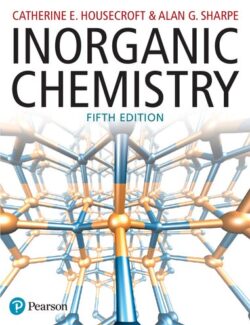

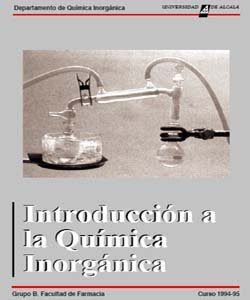
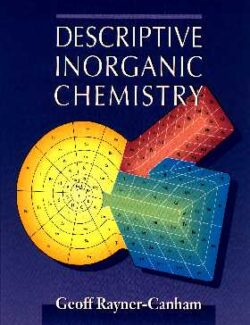
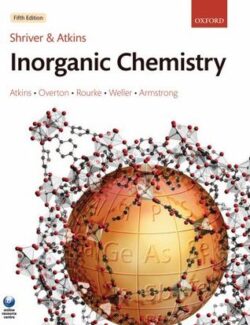
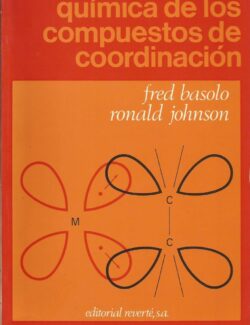
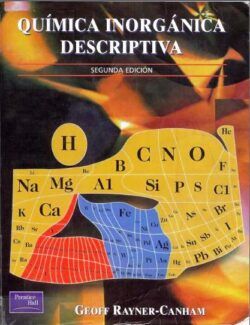
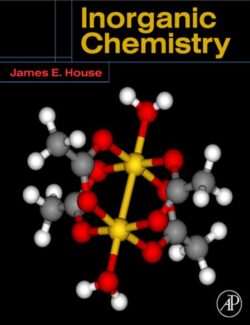

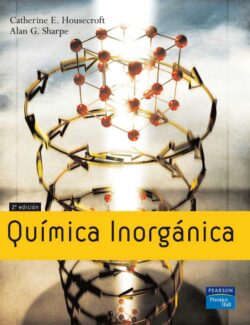

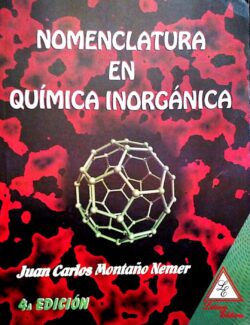
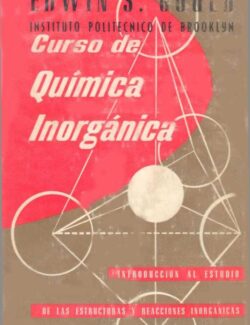
Déjanos un comentario
No hay comentarios